The weather seems to be against me whenever I visit the Sir Harold Hillier Gardens in Romsey. In March it was icy, and you can see this if you take a look at the slide show of the photos I took at the time. After another unseasonably warm weekend, on Monday the weather must have known I had planned a revisit because it reverted to a cold November day. It was the sort of day, with that horrible wet air, not quite a drizzle, but wet enough to make your hair go curly, if you are unlucky enough to suffer from that affliction!
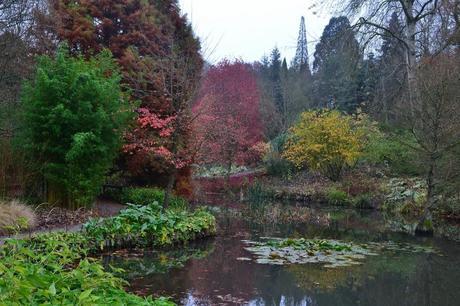
Nevertheless, it is an interesting place to walk around. Every plant, every shrub and every tree is labelled, which is great if you see something you like and want to know what it is called, but after a while, I did feel that I was in a garden centre, especially when looking at the newly planted small plants in wide borders.
There was evidence that the gardeners were out in force and very busy.
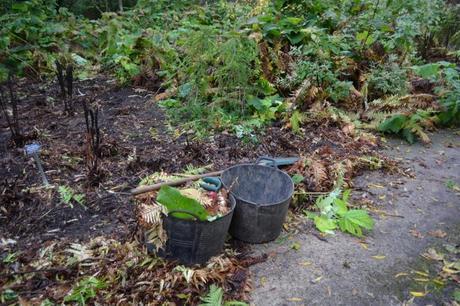
I had to show you this photo, it was the first time I have ever seen Gunnera leaves built into wigwams to protect the crowns, they looked most peculiar and could be seen scattered around the garden.
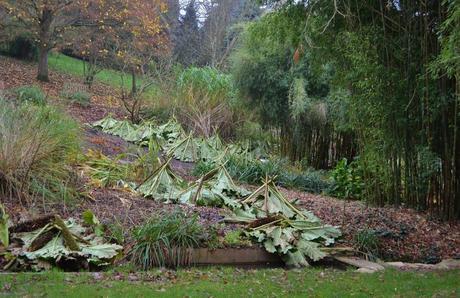
On the back of the map of the garden, was printed “Plants of Current Interest“. The list had 10 plants within the garden and next to each of these plants was a large numbered black and white sign. It was as though we were in a treasure hunt. I am not going to show all 10 plants and some of them were not exciting, mainly because they had lost their leaves. The list was dated 4 November and plants go over very quickly this time of the year. These are some of the more interesting:-
Plant 1 – Callicarpa bodinieri ‘Profusion’
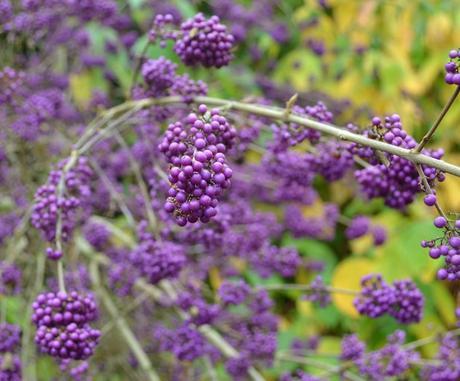
Native to Central and Eastern China, this plant has insignificant pink flowers in the Summer which are followed by very brightly coloured purple fruit which stay on the stems after the leaves have fallen. Great for winter color.
2. Malus ‘Red Sentinal’

This is a very pretty Crab Apple Tree, is ideal for a small garden, and can even been grown in a pot. The fruit tend to stay on the tree, after the leaves have dropped, providing autumn/winter color.
3. Quercus Imbricaria
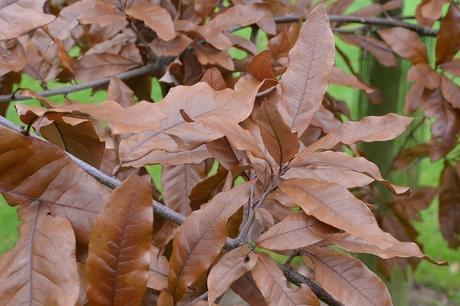
I loved the brown of these leaves, they were not a wrinkled dried autumn brown, but soft and fresh. The tree is from the North American Red Oak family and this species is known as the Shingle Oak.
7. Clethra Tomentosa ‘Cottontail”
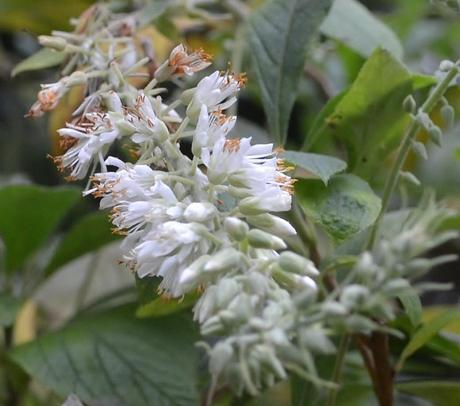
This shrub is native to North America and a “Summer Sweet” species. It flowers early autumn and has a spicy perfume.
9. Nipponathemum Nipponicum
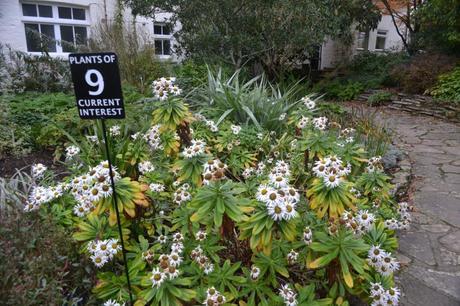
Native to Japan, this is also known as the Nippon Daisy, according to the leaflet the plant is rarely seen in cultivation and if you can find it for sale, it deserves a place in your garden. The Hillier plant has survived heavy snow and remained undamaged.
Apart from the Plant trail there were several other gems. I was fascinated by this Pinus Wallichiana and its brown and green foliage.
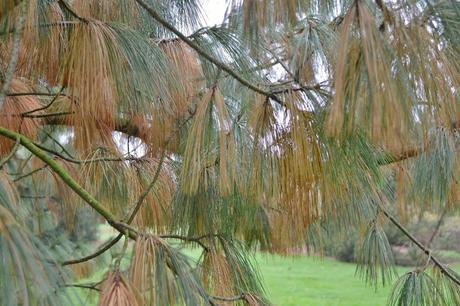
We have all remarked on how the plants are being confused by the weather, but the last thing I expected to see was this little Primula Japonica ‘Apple Blossom’ . It is supposed to flower May to July but here it was, a little battered looking but still flowering in November.
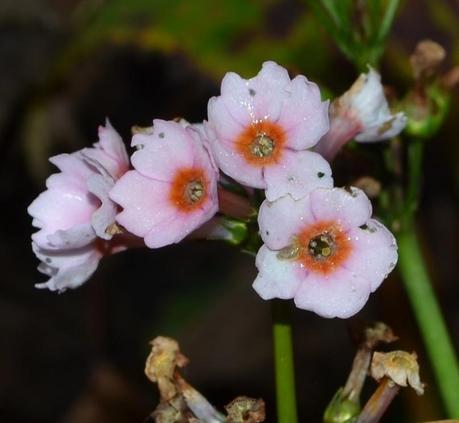
Nature never fails to be full of surprises!

